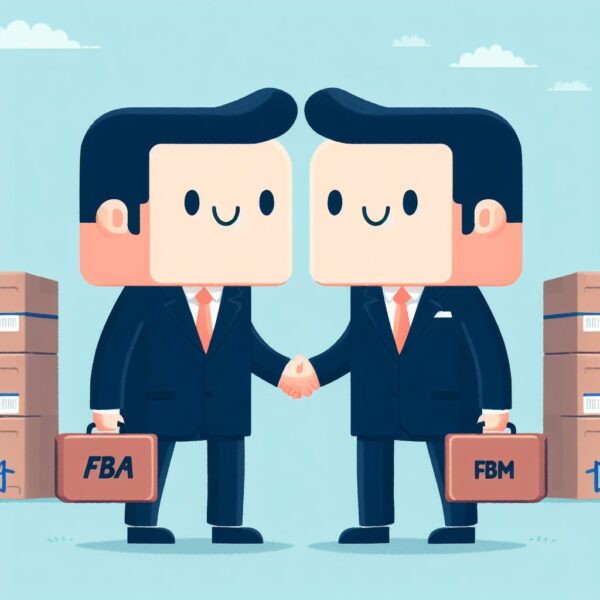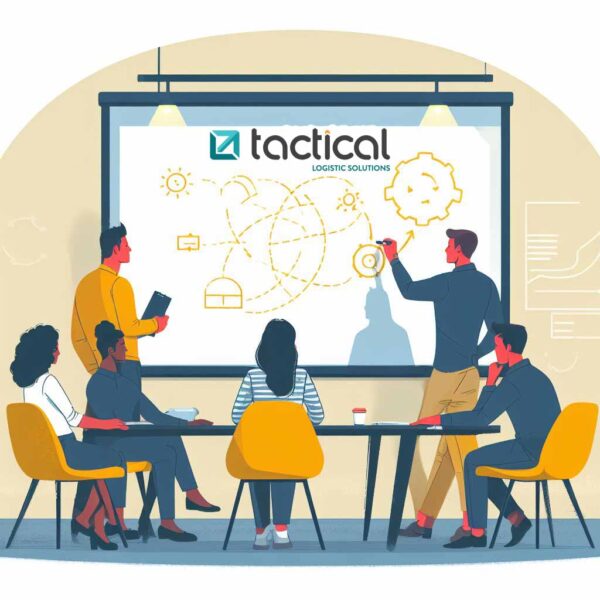E-commerce has undergone a seismic shift over the past decade, altering the landscape of how businesses operate and engage with their customer base. As the world of online retail continues to grow, sellers on platforms like Amazon are faced with crucial decisions about order fulfillment. While Amazon provides two core options—Fulfillment by Amazon (FBA) and Fulfillment by Merchant (FBM)—third-party logistics (3PL) companies are emerging as a flexible and control-oriented alternative. This blog aims to dissect the pros and cons of using FBA, FBM, and 3PL services, helping you decide on the best fulfillment strategies for your business.
Table of Contents
Exploring FBA and FBM
What is Fulfillment by Amazon (FBA)?
Fulfillment by Amazon (FBA) is a popular choice among Amazon sellers for several reasons. Beyond basic order fulfillment, FBA offers added features such as:
- FBA Small and Light: Designed for lightweight items, offering reduced fulfillment costs.
- Amazon Pan-European FBA: This enables you to store inventory closer to European customers, reducing delivery times.
- Multi-Channel Fulfillment: Utilizes FBA for fulfilling orders from other sales channels outside of Amazon.
Pros:
- Eligibility for Prime: Access to Amazon’s 100+ million premium subscribers can significantly increase sales and order volume.
- Customer Trust: Amazon’s quick fulfillment, reliable delivery, and easy returns make customers more likely to make a purchase.
- Reduced Overheads: Save on costs associated with running your own warehouse and staffing.
- Global Reach: Easier expansion to international markets through Amazon’s global fulfillment network.
- Returns Management: Amazon handles returns, taking that burden off the seller.
- Bundling and Kitting: FBA allows for the creation of product bundles, increasing cross-selling opportunities.
Cons:
- Long-term Storage Fees: Slow-moving inventory can accrue costs.
- Inventory Risks: Commingling inventory could lead to counterfeit or quality control issues.
- Branding Limitations: No control over packaging or inserts.
- Complex Fee Structure: Multiple types of fees can make cost calculations complicated.
- Inventory Limits: Amazon may impose restrictions on the amount of inventory you can send in.
- Co-Mingling Risks: Your products may be pooled with those from other sellers, risking quality control.
Fulfillment by Merchant (FBM): Comprehensive Overview
Fulfillment by Merchant (FBM) is an order fulfillment model where the seller is responsible for all aspects of storage, picking, packing, and shipping of their inventory. In FBM, the retailer maintains full autonomy over their stock and fulfillment procedures, as opposed to using Amazon’s fulfillment services.
Key Features of FBM
Self-Ship:
- Flexibility: Sellers have the latitude to use their own shipping methods and negotiate rates with preferred carriers.
- Cost-Effectiveness: This feature allows sellers to choose the most cost-effective delivery options that are best suited for their product types.
Seller-Fulfilled Prime:
Prime Badge:
- By adhering to Amazon’s stringent standards for shipping speed and customer service, sellers can qualify for the Prime badge.
Customer Reach:
- This gives them access to Amazon’s large base of Prime customers, enhancing visibility and boosting sales.
Local Delivery:
Quick Shipping:
- Sellers can create localized delivery services for faster shipping to customers located nearby.
Same-Day or Next-Day Delivery:
- This feature supports options like same-day or next-day delivery, meeting the growing consumer demand for rapid delivery.
Detailed Insights
One of the hallmark features of FBM is the ‘Self-Ship’ option. Retailers can negotiate rates with their chosen postal services or third-party logistics providers, offering them flexibility in selecting cost-efficient delivery choices tailored to their product line.
Furthermore, FBM facilitates localized delivery services for expedited shipping to customers in closer geographical regions. Retailers possessing regional warehouses or physical stores can offer same-day or next-day delivery to local buyers through FBM’s localized self-shipping option. This aligns well with the increasing consumer expectation for quick delivery times.
In essence, Fulfillment by Merchant grants online sellers the power to control their entire inventory and order fulfillment process. Notable features encompass customized shipping rates, access to Prime customers via seller-fulfilled Prime, and the capability to offer localized, quick delivery services. For retailers equipped with the logistical resources, FBM furnishes a level of independence and ownership over the customer experience that is hard to match.
Pros:
Complete Autonomy:
- You can customize your operations
Avoid Storage Fees:
- No need to pay Amazon for the storage of low-velocity items.
Full Brand Control:
- Control over packaging, inserts, and branding.
Complete Autonomy:
- Full control over the entire fulfillment process.
Customized Packaging:
- Opportunities to enhance brand recognition through custom packaging and inserts.
Avoid Amazon Fees:
- Bypass FBA storage and fulfillment fees.
Niche Products:
- Ideal for specialized or made-to-order items that don’t move quickly.
Inventory Control:
- Greater flexibility in managing inventory levels.
Direct Customer Interaction:
- Ability to manage customer service and build relationships.
Cons of FBM:
Customer Service:
- You’re responsible for customer service and returns.
Sales Impact:
- No Prime eligibility generally means lower conversion rates.
Management Overhead:
Requires effort to manage your own warehouse or integrate a 3PL.
Customer Service:
- The sole responsibility for customer service, including returns and complaints.
Limited Prime Access:
- Harder to qualify for the Amazon Prime program, affecting visibility and sales.
Operational Complexity:
- Requires robust systems for inventory management, order processing, and shipping.
Shipping Costs:
- There is potential for higher shipping costs if not managed effectively.
Time-Intensive:
- Requires significant time and effort to manage all aspects of fulfillment.
Seasonal Scalability:
- May face challenges in scaling up operations for seasonal demand spikes.
The Advantages of Using Both FBA and FBM
Risk Mitigation

Utilizing both FBA and FBM can act as a contingency plan. If problems occur with FBA, such as stockouts or fee hikes, FBM serves as a flexible alternative.
Tailored Inventory Allocation
You can strategically place your inventory based on sales velocity and seasonal trends. High-demand items can go through FBA for fast fulfillment, while FBM handles the rest.
Optimizing the Customer Experience
A hybrid approach allows for a range of shipping options, helping to fill gaps, especially during peak sales seasons when FBA might experience delays.
Beyond Amazon: Considering 3PL Alternatives
The Case for Third-Party Logistics
Relying solely on Amazon puts a ceiling on your growth and customer engagement opportunities. In a world where e-commerce is spreading its wings, 3PL partners are increasingly becoming non-negotiable for a business’s success.
Perks of Opting for 3PL Services
- Custom Branding: Tailor the packaging and unboxing experience.
- Wider Distribution: Access a broader network of distribution centers.
- Easy Scalability: Scale without huge upfront investments.
Why Tactical Logistic Solutions Stands Out
Tactical Logistic Solutions (TLS) stands as an exceptional 3PL provider, offering specialized services that can either supplement or replace Amazon’s fulfillment options. This flexibility allows merchants to have greater control over inventory management, shipping options, and customer experiences.
In-House Team and One-Point of Contact
One of the distinguishing features of Tactical Logistic Solutions (TLS) is its complete in-house team. Unlike many 3PL providers that outsource various aspects of their services, TLS manages all operations internally. This ensures a streamlined, efficient, and highly coordinated approach to all logistic needs.
No Hassling
- Streamlined Communication: With an in-house team, the potential for communication errors or delays is greatly reduced.
- Quality Control: An in-house team means that TLS can monitor quality at every stage, ensuring that your products are handled with the utmost care.
No Outsourcing
- Consistency: Handling all services in-house guarantees a consistent level of service that outsourcing cannot match.
- Data Security: Keeping operations in-house ensures that your sensitive data is securely managed and protected.
One-Point of Contact
- Efficiency: Having a single point of contact streamlines communication, making it easier to address issues or make changes to your service plan.
- Personalized Service: Your point of contact knows your business and its specific needs, allowing for more personalized and effective service.
E-commerce demands a multifaceted array of fulfillment strategies to catalyze both growth and customer satisfaction. While Fulfillment by Amazon (FBA) and Fulfillment by Merchant (FBM) have their own set of merits, relying exclusively on them can result in missed opportunities. The rise of adaptable, customizable third-party logistics (3PL) services offers additional channels to refine and expand business operations.
It’s imperative for companies to revisit their existing fulfillment approaches and integrate them with FBA, FBM, and specialized 3PLs like Tactical Logistic Solutions to establish an omnichannel strategy. This approach allows for an optimized inventory layout that is attuned to product demand, seasonal fluctuations, and shipping speed requirements. A robust omnichannel setup not only offers a safety net in case of unforeseen issues but also enriches the customer experience by broadening the range of available fulfillment and delivery options.
By offering an in-house team and a single point of contact, Tactical Logistic Solutions eliminates the hassles typically associated with outsourced logistics, providing a smooth, secure, and efficient fulfillment experience.
In summary, the integration of FBA, FBM, and specialized 3PL services like Tactical Logistic Solutions enables businesses to scale cost-effectively, improve customer satisfaction via branded packaging and tailored delivery options, and carve out a unique identity that extends beyond being just an Amazon seller. Leveraging these synergies in fulfillment is key to fostering repeat business and building loyalty, all while allowing merchants to operate on their own terms.
Frequently Asked Questions (FAQ)
What is Fulfillment by Amazon (FBA)?
In FBM, sellers have complete control over the fulfillment process, including storage, picking, packing, and shipping. This can either be done in-house or through a 3PL partner.
How does Fulfillment by Merchant (FBM) differ from FBA?
Fulfillment by Amazon (FBA) is a service where sellers send their inventory to Amazon’s fulfillment centers. Amazon takes care of picking, packing, and shipping the products when an order is placed.
What are the advantages of using a 3PL service?
Utilizing both FBA and FBM can act as a risk mitigation strategy. It allows you to optimize your inventory based on sales velocity and seasonality, providing a flexible backup option if issues arise with FBA.
Why should I consider using both FBA and FBM?
Third-party logistics (3PL) services offer flexibility, scalability, and customization options that you might not get with FBA or FBM. This includes custom-branded packaging, a wider distribution network, and the ability to scale your business easily.
How can Tactical Logistic Solutions (TLS) benefit my business?
TLS offers specialized 3PL services that can supplement or replace Amazon’s fulfillment options. This gives you greater control over inventory management, shipping options, and customer experiences.
What are the next steps to optimize my fulfillment strategy?
The first step is to re-evaluate your current fulfillment methods. Consider blending FBA, FBM, and 3PL services like TLS to create a resilient, customer-focused operation that drives repeat business.






